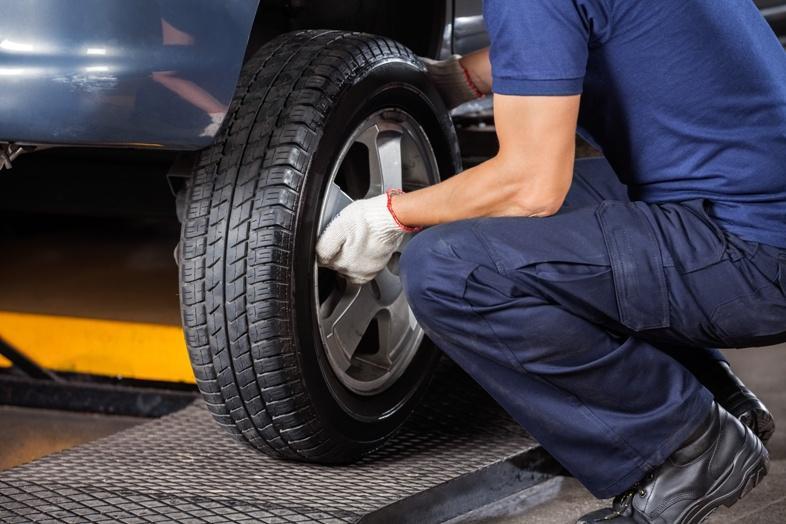Expert Guide to Tire Fixing: Every Little Thing You Required to Know
In this extensive overview, we will untangle the complexities of tire fixing, dropping light on the numerous types of fixing sets readily available and offering useful understandings into when it could be time to bid farewell to a worn-out tire. Keep tuned as we dig deeper into the subtleties of tire maintenance, furnishing you with the essential knowledge to guarantee your tires stand the test of time.
Typical Reasons For Tire Damage
What are the usual reasons that result in tire damages, influencing car efficiency and safety and security? Tire damage can happen as a result of various aspects, with among the primary factors being inappropriate inflation stress. Under-inflated tires can create excessive warm buildup, leading to raised wear and prospective blowouts. Conversely, over-inflated tires can cause minimized traction, uneven wear, and a harsher trip.

An additional usual reason for tire damages is insufficient step depth. Worn-out footsteps can jeopardize grip on the roadway, especially in wet or slippery conditions, boosting the threat of crashes. Additionally, driving over pits, debris, or sharp items can penetrate or create cuts in the tire, weakening its structure and potentially causing a flat.
Furthermore, improper wheel alignment and unbalanced tires can likewise contribute to tire damage. Misaligned wheels can cause unequal wear patterns, while out of balance tires can trigger vibrations, impacting both the automobile's handling and the tire's durability. Routine upkeep checks and punctual repairs can assist minimize these common sources of tire damage, ensuring optimal car performance and security.
Kinds Of Tire Repair Sets
To resolve the results of common causes of tire damages reviewed previously, it is vital to understand the various kinds of tire repair service sets available for vehicle owners. There are largely 3 types of tire repair service packages typically utilized: plug packages, spot kits, and combination repair service packages.
Plug sets are a quick and easy solution for fixing little punctures created by nails or screws. They contain a T-handle device and rubber plugs that can be placed into the slit to secure the hole effectively. Spot kits, on the various other hand, are preferable for bigger punctures or cuts in the tire. These packages consist of a spot and sticky product that is put on the internal cellular lining of the tire to cover the damaged area firmly.
Combination repair service packages provide the benefit of containing both plug and spot parts, offering a comprehensive option for a selection of tire damage situations. It is vital for vehicle owners to acquaint themselves with these various sorts of tire repair work sets to be planned for any unforeseen check my reference tire concerns when driving.

Actions to Fix a Tire Puncture
Fixing a tire leak requires a systematic strategy and the right devices to ensure a secure and efficient service. When encountered with a punctured tire, the first action is to securely pull over to a level, secure surface away from website traffic. Involve the Get More Information auto parking brake and location wheel chocks behind the tires to prevent any kind of unintentional rolling.
When to Replace a Tire
Determining the ideal time for tire replacement necessitates a detailed assessment of numerous crucial elements connected to tire wear and security. One important aspect to think about is the tread depth. As tires put on down, the depth of the step reductions, influencing the tire's hold when driving. A lot of experts suggest changing tires when the walk deepness gets to 2/32 of an inch to maintain optimum traction (morris tire service). Furthermore, examining the tire for any type of signs of damage such as cuts, protrudes, or fractures is vital. These issues can endanger the structural stability of the tire, raising the risk of a blowout. Age is an additional significant consider tire replacement. Even if the step deepness appears enough, tires older than six years should be meticulously analyzed, as the rubber can deteriorate in time, making the tire much more prone to failing. Routinely examining these aspects and speaking with a specialist can aid figure out when it's time to replace a tire for ideal safety when traveling.
Tire Upkeep Tips for Long Life
After assessing key elements associated with tire wear and safety, implementing proper tire maintenance techniques is essential for maximizing the longevity of your tires. Routinely checking tire pressure is crucial, as underinflated tires can lead to increased wear and see this here lowered gas effectiveness. It is suggested to inspect tire pressure at the very least as soon as a month and eventually journeys. In addition, keeping correct wheel alignment and equilibrium can aid extend the life-span of your tires. Misaligned wheels can create irregular wear, while unbalanced wheels can cause vibrations and premature tire wear.
Revolving your tires at regular intervals, commonly every 5,000 to 7,000 miles, promotes even step wear across all tires. This method expands the life of your tires and guarantees optimum performance. Checking tires for indicators of damage, such as cuts, protrudes, or punctures, is likewise essential for keeping tire longevity. Driving behaviors play a considerable duty in tire wear. Staying clear of unexpected quits, sharp turns, and excessive speeding can assist maintain your tires and boost security when traveling. By following these tire upkeep pointers, you can make the most of the life-span of your tires and guarantee a smooth driving experience (discount tires morris il).
Conclusion
In final thought, understanding typical reasons for tire damage, utilizing the ideal tire fixing kits, following proper steps to repair a tire puncture, knowing when to replace a tire, and carrying out tire upkeep ideas are crucial for optimizing the longevity of your tires. By remaining educated and aggressive in resolving tire issues, you can guarantee safety when driving and lengthen the lifespan of your tires.